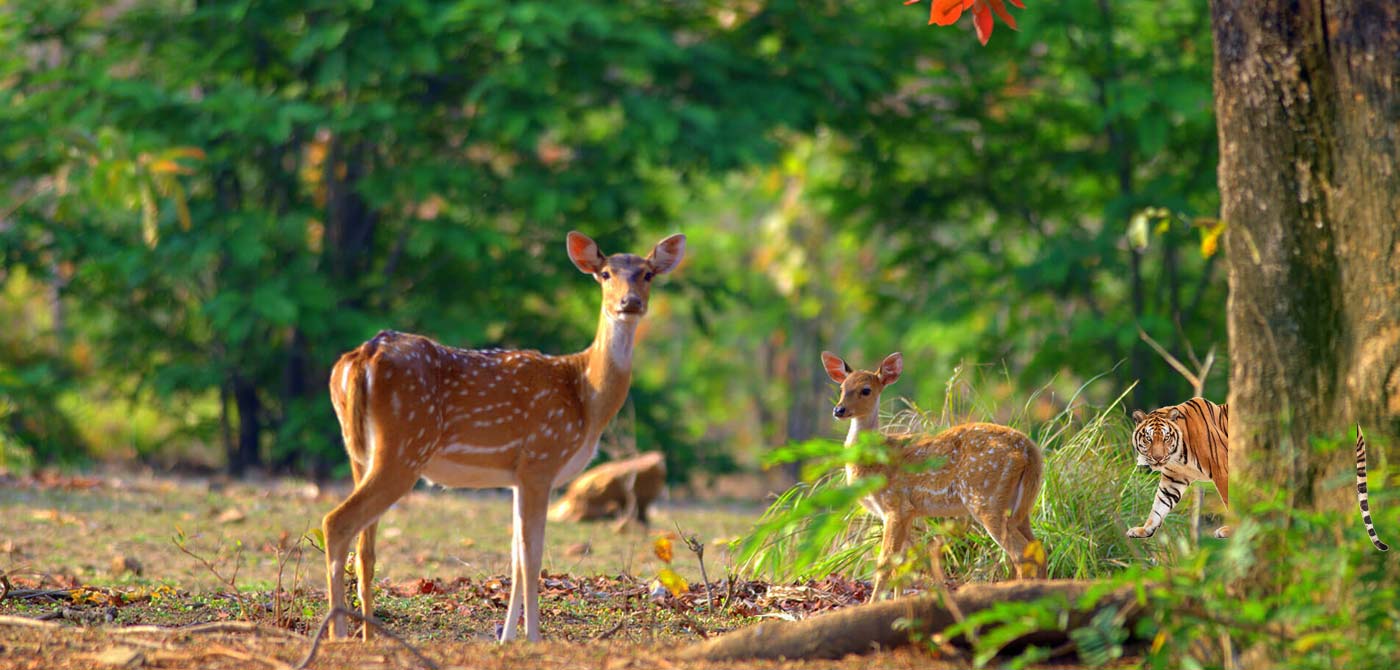Corbett Tiger Reserve
The Corbett Tiger Reserve is believed to have captured attention of wildlife lovers. The Corbett National Park is also famous for some of the amazing landscapes. The Corbett National Park is well known after the famous huntsman named James Edward Corbett who later turned as a conservationist of the area. The ambitious conservation project ‘Project Tiger’ was launched in the year 1971 and was successful.
The Corbett National Park covers an area of 521 sq km and alongside the Sonanadi Wildlife Sanctuary and Reserve Forest Areas forms the Corbett Tiger Reserve in region of Uttarakhand. The wet and dry habitats of the plain and mountainous region, rugged and gentle, grasslands and the forests also support numerous flora and fauna which actually represents the Himalayan ecosystem belt.
Corbett Tiger Reserve (CTR) is One of India's richest wilderness areas. The Tiger Reserve encompasses an area of 1288.34 sq km, which include two Protected Areas: Corbett National Park (520.82 sq. km) and Sonanadi Wildlife Sanctuary (301.18 sq. km). Corbett National Park has captured the imagination of many with its diverse wildlife and breathtaking landscapes. The natural uniqueness of the area was recognised long ago and so in 1936 Corbett attained the distinction as the first national park to be established in mainland Asia. Corbett National Park lies in two districts - Nainital and Pauri - in the hill state of Uttarakhand in northern India. It covers an area of 521 sq. km and together with the neighbouring Sonanadi Wildlife Sanctuary and Reserve Forest areas, forms the Corbett Tiger Reserve over 1288 sq. km. Its geographical location between the Himalayas and the terai, and the streams, rivers and ridges crisscrossing the terrain, present Corbett with a remarkable variety of landscapes. This vivid mosaic of habitats - wet and dry, plain and mountainous, gentle and rugged, forests and grasslands - supports numerous plant and animal species, representing Himalayan as well as plains kinds. The most famous of Corbett's wild residents are the Bengal Tiger and the Asiatic Elephant, but with about 600 species of avifauna Corbett is one of the richest bird regions of India.
Corbett Tiger Reserve (CTR) lies in the Shivalik-terai biotic province on the foothills of the Himalayas. This has led to an amazing diversity in habitat types and species. Elements of Himalayan flora and fauna can be seen here along with those of peninsular India.
Govt. of India launched an ambitious conservation programme Project Tiger on the banks of the Ramganga River in Corbett Tiger Reserve on 1st April, 1973. The launch of Project Tiger heralded the onset of scientific wildlife management in India. The major objective of this programme is to secure the preservation of the highly endangered species of tigers, (Panthera tigris tigris) and to use our national animal as a symbol of our precious natural heritage to secure the conservation of all major representative ecosystems across the tiger range.
Corbett Tiger Reserve today holds probably the second largest population of free living tigers in the world. The reserve is thus one of the last remaining strongholds, which holds a potentially viable population of this majestic and critically endangered felid. Nearly 600 Asian elephants (Elephas maximus) also have a home in this Tiger Reserve, and can be seen wandering leisurely along its length and breadth. CTR, along with the Rajaji National Park also represents the North -Western most limits of Tiger and Elephant distribution in the Indian subcontinent.
Several endangered species such as the Mugger, Gharial, Leopard cat, Goral, Serow, and Mahaseer etc. have a significant presence in the region. Four species of deer- sambar, spotted deer, hog deer and barking deer-with sloth bear, jackal, jungle cat, yellow throated marten, smooth Indian otter and black naped hare are also found. Along with, several identified and unidentified elements of biodiversity such as grasses, mosses, lichens, fungi, insects, etc. are also represented in this region.
The area is also home of about 600 species of resident and migratory birds. This amazingly rich avifaunal diversity represents nearly 6% of the total bird species represented in the world and is more than the total bird diversity of Europe. The 49 species of diurnal raptors found here are characteristic elements of this avifauna. The avifaunal diversity is at its peak during winters.
 +91 9799050299
+91 9799050299 
